

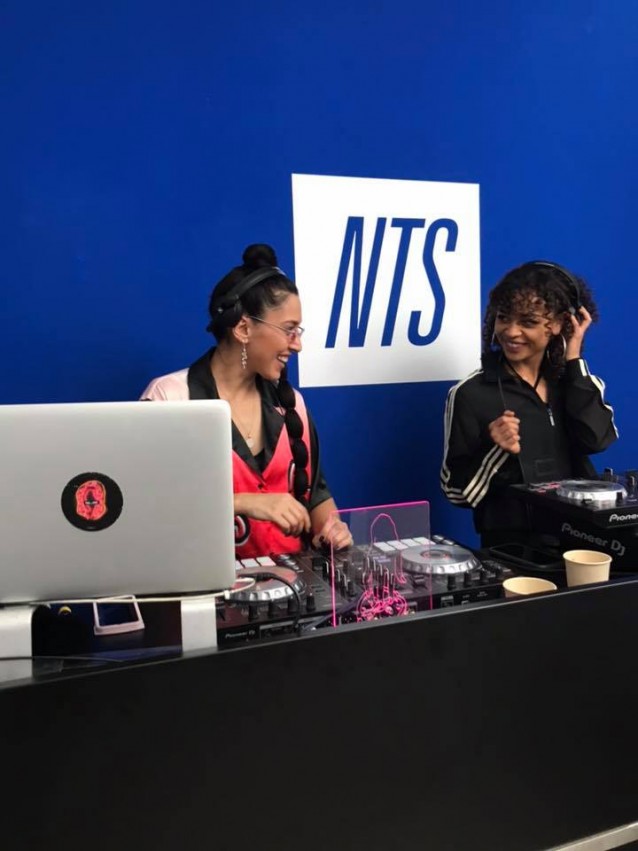
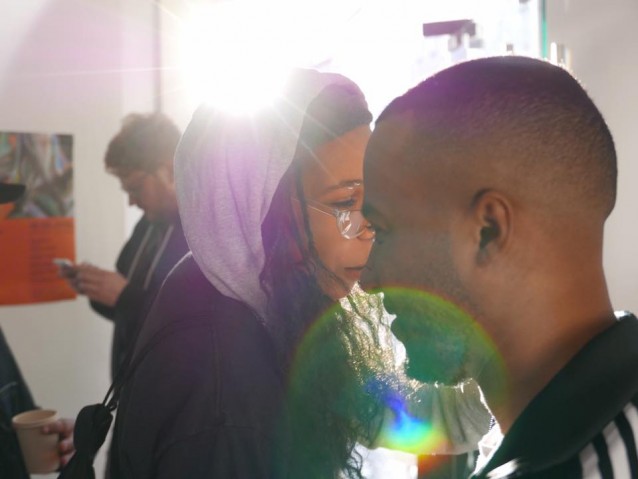
A few photos from the NTS x adidas Originals Crew 2 Crew event at HVW8 Berlin, highlighting the Berlin Underground scene.
Featured music :









A few photos from the NTS x adidas Originals Crew 2 Crew event at HVW8 Berlin, highlighting the Berlin Underground scene.
Featured music :





Thank-you to everyone that came through the Opening Night of ‘LE LUCKY’ currently on display at HVW8 Berlin.
Opening Friday, March 8th, 6 – 10pm
RSVP at rsvp@hvw8.com
Eric Elms is an artist and designer living and working in out of his multidisciplinary studio in Los Angeles CA. He has shown in numerous group shows around the world as well as solo shows in New York, Tokyo and Paris.
Drawing upon his own art practice as well as his work in print and design, Elms appropriates elements from his previously established graphic language and breaks them down by syllable, re-inventing and re-purposing the familiar to the brink of ambiguity. The imagery is in flux between banality and trope. Forcing the viewer to further reflect upon the image itself rather than it’s direct representation. This new language is used intentionally to degrade the imagery. The work exists in the crosshairs between representation and abstraction.
View Sonic will present two iterations of this process; a series from his “Halftone” paintings as well as a small selection of his “Stair” paintings.
Made possible with support from adidas Originals
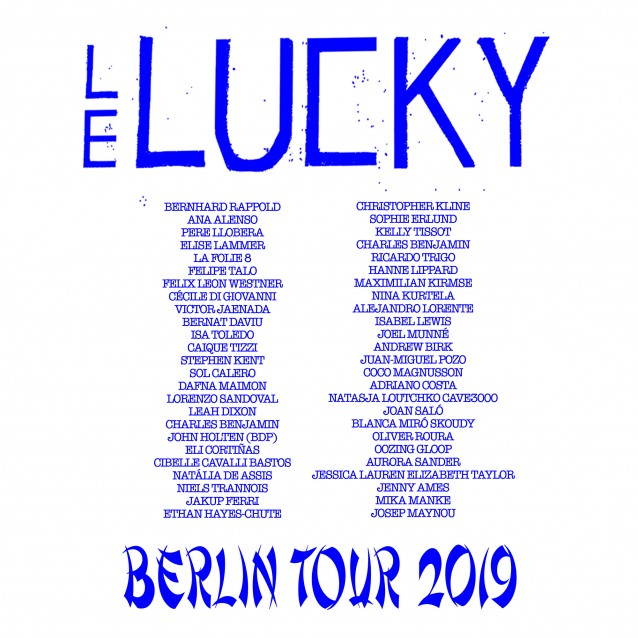
HVW8 BERLIN | JOSEP MAYNOU ‘LE LUCKY’
Opening: Saturday, February 16 7:00-10:00pm
Special Programming: February 17, 18, 22, 23
Exhibition Hours: February 20–March 30, 2019, Wednesday to Friday 2-7pm, Saturday 12-6pm
Free Admission
HVW8 Gallery Berlin is pleased to present LE LUCKY, a fictional and functioning bar created by Josep Maynou, opening Saturday, February 16th. As a celebration of love, friendship and the avant-garde, LE LUCKY is the Catalonian artist’s tribute to his thirteen years in Berlin, as well as a bittersweet goodbye to the city. The exhibition signifies a full circle for Maynou, who during his first year in Berlin worked as a bartender in Berlin’s Mitte neighborhood, nearby to HVW8 Berlin. Through the element of collaboration, the artist establishes the gallery as a site of fortuitous social interaction: he has invited fifty of his creative friends to contribute to the installation with performances, artwork and music, programmed throughout the show’s one-month duration. As captured by its title, the exhibition is symbolic of good fortune in social and occupational relations, initiating a chance for new beginnings and exchanges.
LE LUCKY
Bernhard Rappold
Ana Alenso
Pere Llobera
Elise Lammer
La Folie 8
Felipe Talo
Felix Leon Westner
Cécile di Giovanni
Victor Jaenada
Bernat Daviu
Isa Toledo
Caique Tizzi
Stephen Kent
Sol Calero
Dafna Maimon
Lorenzo Sandoval
Leah Dixon
Charles Benjamin
John Holten (BDP)
Eli Cortiñas
Cibelle Cavalli Bastos
Natália de Assis
Niels Trannois
Jakup Ferri
Ethan Hayes-Chute
Christopher Kline
Sophie Erlund
Kelly Tissot
Charles Benjamin
Ricardo Trigo
Hanne Lippard
Maximilian Kirmse
Nina Kurtela
Alejandro Lorente
Isabel Lewis
Joel Munné
Andrew Birk
Juan-Miguel Pozo
Coco Magnusson
Adriano Costa
Natasja Loutchko CAVE3000
Joan Saló
Blanca Miró Skoudy
Oliver Roura
Oozing Gloop
Aurora Sander
Jessica Lauren Elizabeth Taylor
Jenny Ames
Mika Manke
Josep Maynou
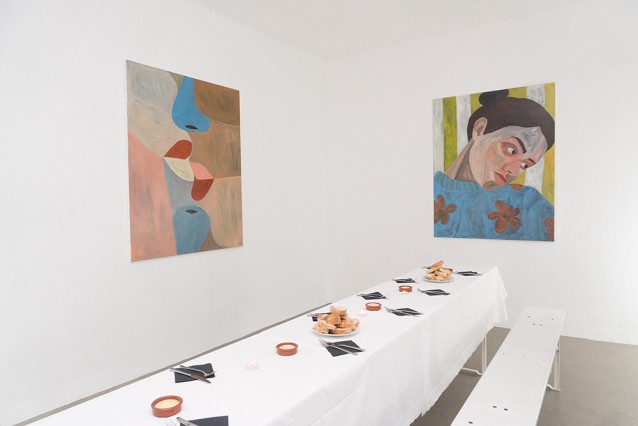
Happy New Year from HVW8!
As we head into an amazing line up for 2019, we look back at all the incredible exhibits, installations and performances from HVW8 Los Angeles, Berlin and beyond this past year.
We were lucky to have a number of exhibits from an international group of artists such as Gogy Esparza, Inès Longevial, Atiba Jefferson, Olimpia Zagnoli, Chi Modu, Steven Traylor, and Erin D. Garcia to name a few. We continued with our Creative Class Series for intimate interactions with our gallery artists on their creative process and started an Emerging Artist Program to give a platform for up and coming artists.
We continued with our diversity in programing with a variety of installations, performances, radio broadcasts and artist talks with the likes of Kali Uchis, Snoop Dogg, Standing on the Corner, RZA and Einhundert.
Look for an amazing line up for 2019!
Below are a few links from some highlights of 2018.
2018 Year In Review
Exhibits
Beirut Youth Gogy Esparza, Jey Perie
February 22 – March 18th
Four Conversations Inès Longevial, 44 Flavours, Huskmitnavn, Julian Smith
April 28th – June 16th
Heart-Shaped Box Atiba Jefferson
May 19th – July 15th
Cuore Di Panna Olimpia Zagnoli
May 25th – July 15th
Uncategorized – Berlin and Los Angeles Chi Modu
July 5th – August 4th, 2018
August 26th– September 23rd
Wild At Hand – A Group Show of Contemporary Drawing
September 14th– October 13th
10 Toes With His Chest Caved In Steven Traylor
Sept. 22nd – October 7th
Not To Lose My Head Jay ‘One’ Ramier
October 25th – November 24th
Grand Prix Erin D Garcia
Nov. 16 – Dec. 23rd
2018 HVW8 Highlights – Installations, Artist Talks and Performances :
Sarah Bahbah Installation at HVW8 Los Angeles
Andrew Westerman at HVW8 Berlin
Kali Uchis at HVW8 Los Angeles
Artist Dinners Berlin / Los Angeles

Creative Classes – Atiba Jefferson and Chi Modu
Snoop Dogg Live Talk and DJ Set from HVW8 Plana
Wu Tang x Off Safety featuring Eddie Otchre and Paul Chan, live performance by RZA
Standing on the Corner Live Performance and Film Screening
Einhundert ‘Heavyweight Sounds’ Live broadcast from HVW8 Berlin

Select Press –
Inès Longevail on Cover of Juxtapoz
Tyler Gibney Interview in Amadeus
Olimpia Zagnoli ‘Cuore Di Panna’ lecture for Nicer Tuesdays
Chi Modu at HVW8 in Paper Magazine
Wishing you and your family the best from HVW8 Galleries Los Angeles and Berlin, and looking forward to an exciting and prodigious 2019.
Also Special Thanks to our HVW8 Family, if not for you this would not be possible.
Los Angeles –
Addison Liu, John Wheeler, Gabriel Ortiz, Max Junk, Jake Venden Berge, Henry Anguiano, Nicole Kunz, Kelly Merlo, Yvonne Otchwemah, Julio Martinez, Pierre Briet, Mo Hill, Richie Dandan, Josh Chandler
Berlin –
Jenny Ames, Manuel Osterholt, Mika Manke, Lili Somogyi
Cheers to 2019!
Interview with Dam-Funk on how he linked up with Snoop Dogg at the ‘Doggystyle’ exhibit at HVW8 Los Angeles, and would later collaborate for 7 Days Of Funk.
Hear more here: https://youtu.be/2pyN-q7iMF4

HVW8 Gallery Berlin presents
JAYBO MONK
‘APOPHENIA’
OPENING: DECEMBER 15, 6 – 10 PM
DEC 15 – 22, 2018
Apophenia (/æpou´fi:niə/) is the tendency to mistakenly perceive connections and meaning between unrelated things. The term (German: Apophänie) was coined by psychiatrist Klaus Conrad in his 1958 publication on the beginning stages of schizophrenia. He defined it as “unmotivated seeing of connections a specific feeling of abnormal meaningfulness”.
He described the early stages of delusional thought as self-referential, over-interpretations of actual sensory perceptions, as opposed to hallucinations.
Jaybo Monk reflects on the perception of random data in our virtual world and social media. The most common examples of Apophenia are people seeing faces in clouds or in the moon. If Apophenia is about drawing connections and conclusions from sources with no direct connection other than their indissoluble perceptual simultaneity, then maybe virtuality is our new reality. Weed seeds grow into plants that may be rich in THC and other cannabinoids. The idea of reality is more real than reality itself. Ideas are taken without being questioned and we are living in a world of binary choices only. We are dead in a dead time where not seeing anything intelligible is the new normal. We are damned to dream towards reality and not away from it.
The paintings and objects presented in Apophenia are constructed within the idea of time spent to keep everything in a present moment which is a moment of no reflexion in itself. Through layers in his paintings and associations in his objects and sculptures Jaybo Monk wants us to re-appreciate time where the past and the future are the foundations of reality – and not the virtual present controlled by our smart phones and other illnesses.
Drinks by Warsteiner
HVW8 GALLERY BERLIN – LINIENSTR 161, 10115 BERLIN
OPENING HOURS: WED-FR 2-7 PM, SAT 12-6 PM
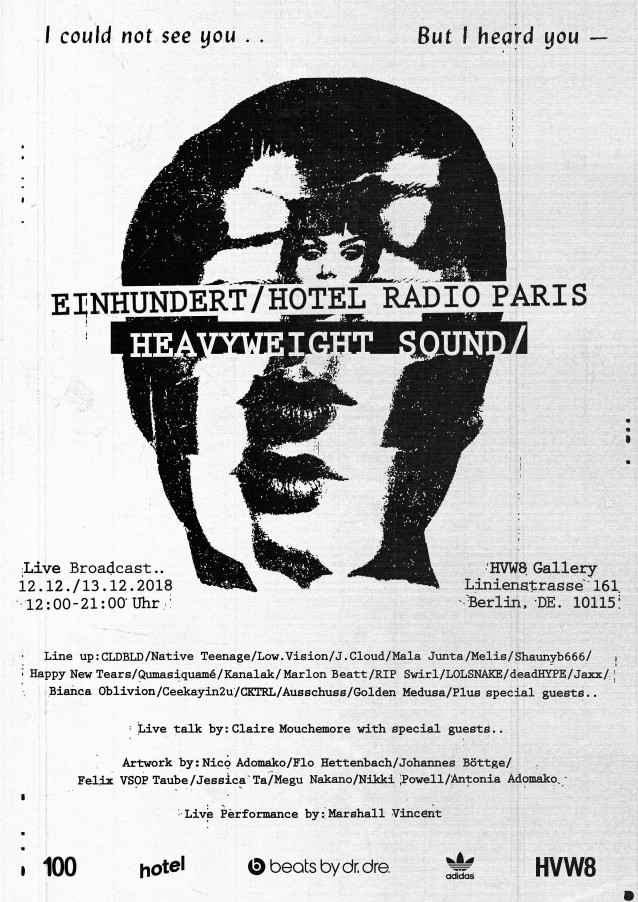
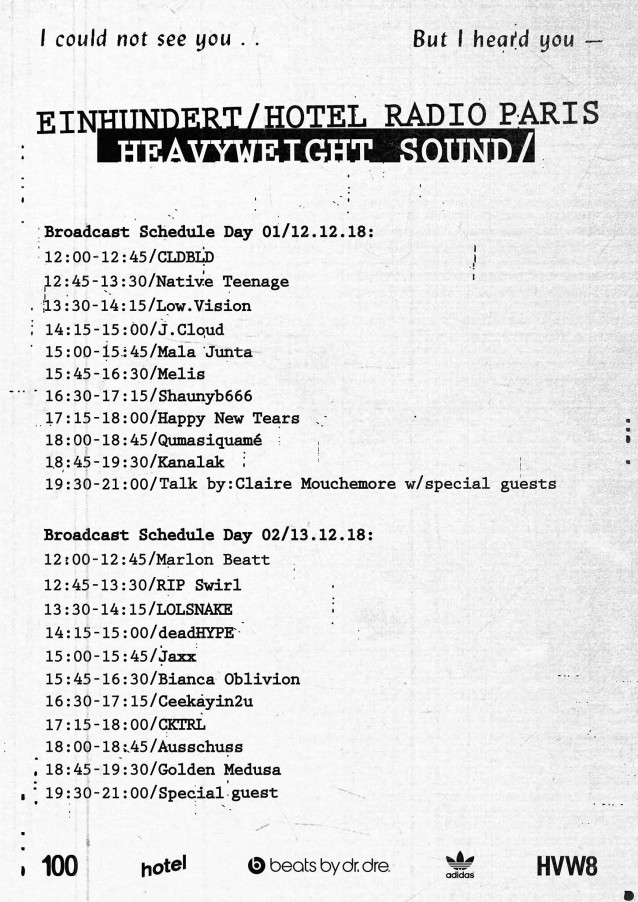
The Einhundert family and Hotel Radio Paris have teamed up again for their second Berlin Radio Hang Out live from HVW8 Berlin.
Join us for A live intimate broadcast and drinks with music from the Einhundert Soundsystem, J.Cloud, Lolsnake (Weeeirdos), Ausschuss (Hauter Records), Golden Medusa (Leisure System), CKtrl (NTS / LDN), Native Teenage, Cld.Bld and many more.
Tune into Radio Talk hosted by Claire Mouchemore (Writer & Editor, BORSHCH Magazine, Electronic Beats etc.) plus very special guests from Berlin’s music scene.
In addition we will exhibit selected artworks by friends from across the globe including
Antoni Adomako
Felix VSOP Taube
Flo Hettenbach
Jessica Ta
Johannes Böttge
Nico Adomako
Nikki Powell
Megu Nakano
HEAVYWEIGHT SOUND – BROADCASTING SCHEDULE:
DAY 1 / 12.12.2018
12:00 – 12:45 CLDBLD
12:45 – 13:30 NATIVE TEENAGE
13:30 – 14:15 LOW.VISION (EINHUNDERT SOUNDSYSTEM)
14:15 – 15:00 J.Cloud (Soulkissesarts)
15:00 – 15:45 MALA JUNTA (Hyperaktivist B2B DJ TOOL)
15:45 – 16:30 MELIS
16:30 – 17:15 SHAUNYB666
17:15 – 18:00 happy new tears
18:00 – 18:45 Qumasiquamé (THROUGH MY SPEAKERS)
18:45 – 19:30 kanalak (PALMOIL / FRANKFURT)
19:30 – 20:30 TALK HOSTED BY CLAIRE MOUCHEMORE (BORSHCH) – GUESTS TBA.
20:30 – 21:00 Marshall Vincent LIVE
DAY 2 / 13.12.2018
12:00 – 12:45 MARLON BEATT
12:45 – 13:30 RIP Swirl (EINHUNDERT SOUNDSYSTEM)
13:30 – 14:15 Lolsnake (Weeeirdos)
14:15 – 15:00 DEADHYPE
15:00 – 15:45 JAXX
15:45 – 16:30 Bianca Oblivion (Club Aerobics – NTS Radio / L.A.)
16:30 – 17:15 CEEKAYIN2U (No Shade)
17:15 – 18:00 CKtrl (SONGS 4 GIRLS – NTS Radio / LONDON)
18:00 – 18:45 Ausschuss (Haunter Records)
18:45 – 19:30 Golden Medusa (Leisure System)
19:30 – 21:00 TBA
After the party (and the exhibition) is the Afterparty…
Join Einhundert and Hotel Radio Paris for the official HEAVYWEIGHT SOUND Afterparty at 131 BAR.
Limited Free Tickets available at HVW8 during the Einhundert x Hotel Radio Paris // Heavyweight Sound Pop Up Radio Station, first come first served. Come early!
LINE UP:
Bianca Oblivion (Club Aerobics – NTS Radio / Los Angeles)
soundcloud.com/biancaoblivion
CKtrl (Songs 4 Girls – NTS Radio / London)
soundcloud.com/cktrl
Nico Adomako (Einhundert / Berlin)
soundcloud.com/nicoadomako
Kanucia (kanalak – PalmOil / Frankfurt)
https://soundcloud.com/kanucia
JJAQ (Einhundert – Radio 80000 / Rotterdam)
soundcloud.com/jjaqcf
Dj Hrp (Hotel Radio Paris / Paris)
+ Open USB B2B Till Infinity
– – – – – – — – – — – – — – – – – – — – – — – – – — – – — – — –
131 BAR
Chausseestraße 131A – Berlin Mitte
21:00 – Till Late
5€ at the Door

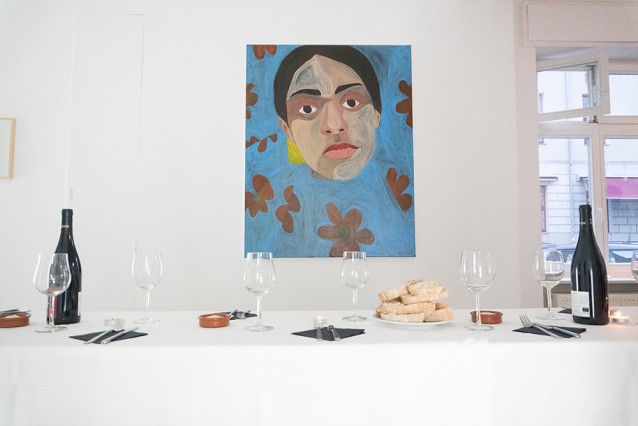
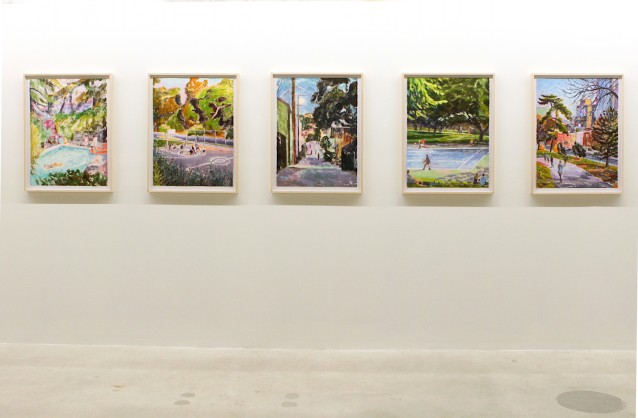
New Work now available online . Featured artists include Erin D. Garcia, Inès Longevial, Brian Lotti, Steven Traylor and more. Please email info@hvw8.com for further information.
“To me, home is any place where you can be creative and make things. I love minimal spaces. The starker the better, when it comes to giving yourself free reign to create. I like a white box.”
LAKISHA KIMBERLY ROBINSON, KNOWN AS “KILO KISH,” AT HVW8 GALLERY LOS ANGELES, CALIFORNIA / PHOTOGRAPH BY DAVID BLACK FEATURED IN CALIFORNIA SUNDAY ‘THE WAY HOME’ DECEMBER 2018 ISSUE
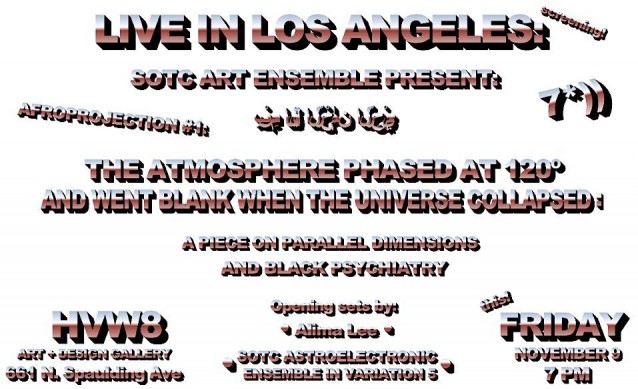
Tomorrow Friday 11/9 in LA at HVW8 Art + Design Gallery ——- screening a film by Standing on the Corner.
Afroprojection #1: The Atmosphere Phased at 120* And Went Blank When The Universe Collapsed
Starting off at 7 w a short DJ set followed by a performance by the SOTC Art Ensemble. Film screens at 8.
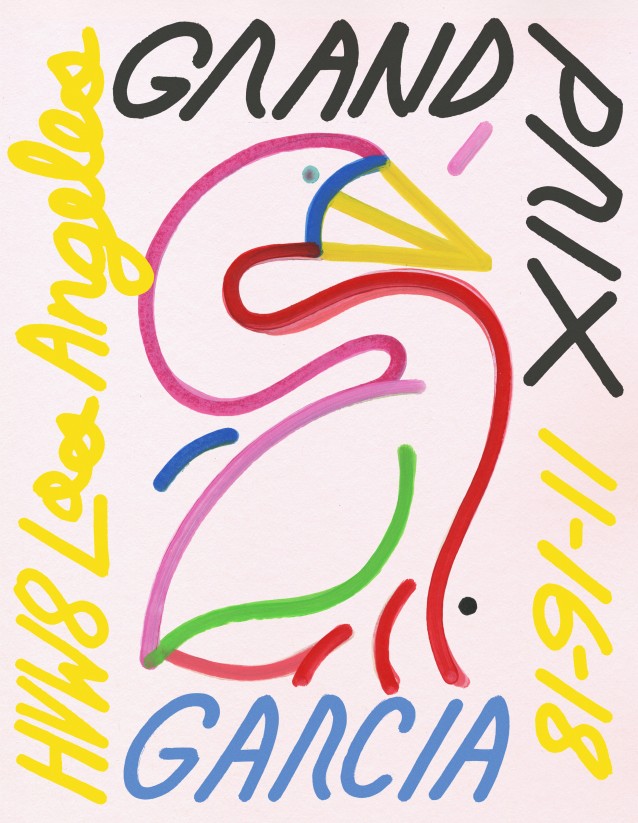
Opening Night – Friday, November 16, 2018, 7 – 10pm
rsvp@hvw8.com
Music by
Nosaj Thing & Micah James
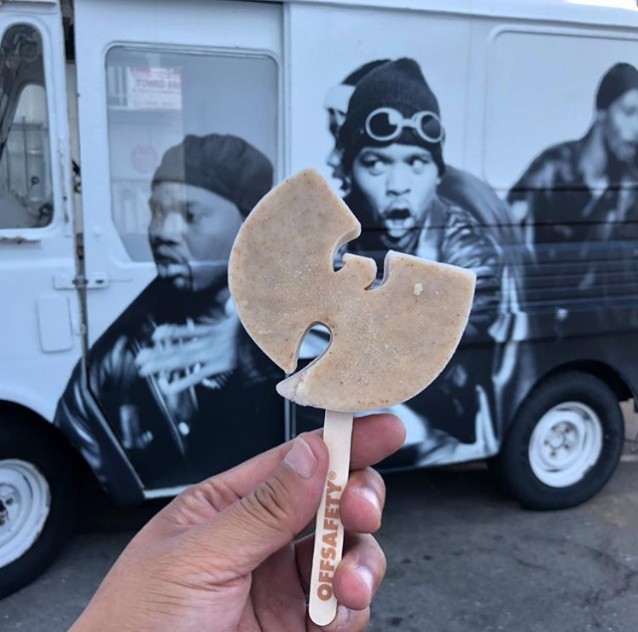
Wu-Tang x Off-Safety Featuring Photographers – Eddie Otchere and Paul Chan October 25th, 2018 Featuring Performances by RZA, Young Dirty Bastard, Masta Killa
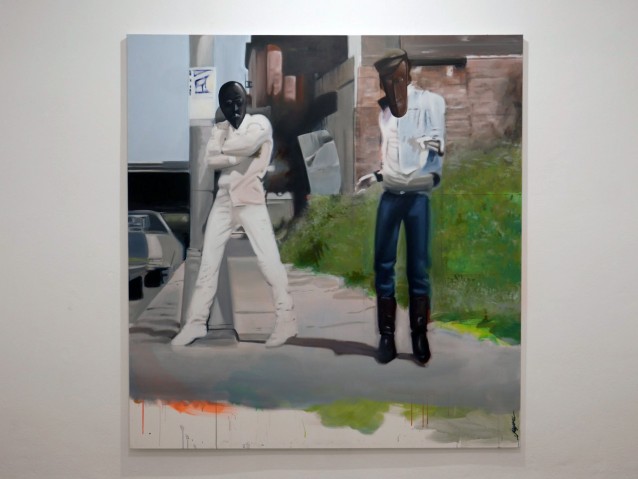
JAY “ONE” RAMIER – NOT TO LOSE MY HEAD
HVW8 BERLIN
25.10–24.11 2018
Exhibition Opening
Thursday, 25 October 2018
6:00pm – 10:00pm
HVW8 Berlin – Linienstraße 161, 10115 Berlin
Free admission – Warsteiner refreshments will be served
In this series of paintings and collages, Jay “One” Ramier retrieves and reinterprets the first hip hop song that was also a work of social criticism. “The Message” performed by Grandmaster Flash and The Furious Five, feat. Belle Mel and Duke Bootee, describes social disarray, violence, decadence, alienation and self-harm. Released in 1982, it was widely recognized as one of the most iconic songs of late 20th century, and still speaks to the social reality of today.
In “The Message,” hip hop’s tone, formerly celebratory, becomes one of desperate urgency:
“Don’t push me ‘cause I’m close to the edge
I’m trying not to lose my head
It’s like a jungle sometimes
It makes me wonder how I keep from goin’ under”
By crystallizing elements of the song and its video into still images, Jay Ramier invites us to pause and consider in detail the harsh realities and evocative expressions of urban life. In this moment, hip hop’s mission changes. Jay Ramier has always stated his love for music, which he considers inspirational and the mightiest of all art forms: “I like the way music, like the holy spirit, can take possession of one’s soul, either by the power of the lyrics or the enchantment of hypnotic melodies or sounds.”
The video cuts between frenetic New York City streets, South Bronx residents strolling or playing, elderly people lying in the streets, and abandoned lots of rubble. The group raps on stoops and street corners, and the police make conspicuous appearances.
In translating imagery from the music video into the medium of static visual arts, NOT TO LOSE MY HEAD reveals the lives that Grandmaster Flash and the Furious Five sought to bring attention to and their lasting impact on us in today’s world.
Almost 40 years later “The Message” still rings true, speaking to economic pressures and systemic racism that persist today. On the one hand, Jay Ramier´s focus on the song highlights the ongoing nature of social inequality, but on the other hand, he explores the roles of popular music and art for expressing and questioning social experience, highlighting the importance of struggle and resistance.
About Jay “One” Ramier
Jay Ramier is a multidisciplinary artist working in the media of painting, video, installation and music. His work is an ongoing investigation into his own Caribbean cultural roots and the representation of African diaspora people in cultural spaces.
The narrative he constructs extends into and draws from the plenum of Pan-African experience from West African coast to the Americas. His work fuses the iconography of struggle and resistance as well as popular culture with the styles of musical and linguistic expression of African descendant worldwide. The focus is on the establishment of a new global system of representation to undermine that of western mainstream hegemony.
Jay has been key actor in the building of the European Graffiti and “Urban-Art” scene, a cosmopolitan Afro-centric movement, for the better part of thirty years.
Jay Ramier is a co-creator and contributor to many local magazine projects such as Paris Zulu letters – Hip Hop´s first international Zine, Backjumps Berlin – Street-Art´s first magazine. Currently, Jay is the Artistic-Director of and regular contributor to Afrikadaa, a magazine and conceptual project created in 2010. He has also published the book MOUVEMENT. Du terrain vague au Dance-floor 1984—89, ed. Les mots et le reste 2017. His work has been featured in the 2015 Venice Biennale exhibit “BRIDGES OF GRAFFITI”.
His work is an ongoing fight for a better and more accurate representation of Minorities in cultural spaces (galleries, museums, institutions) and the recognition and importance of Africa’s influences on modern and contemporary culture.
Gallery & media contact
HVW8 Gallery Berlin, Linienstraße 161, 10115 Berlin
Jenny Ames
+49 (0)177–14 28 588
jenny@hvw8.com
Manuel Osterholt
manuel@hvw8.com
About HVW8
HVW8 Gallery Berlin was established in 2014 by HVW8 Gallery co-founders Tyler Gibney and Addison Liu. HVW8 Gallery was founded in 2006 in Los Angeles with a focus on supporting fine art and avant-garde graphic design. HVW8 fosters artistic visions at the intersection of art, music and design, and collaborates with an international community of artists. Emerging and established artists such as Brian Lotti, Jean Jullien, Cody Hudson, Jerry Hsu, Jean André, Atiba Jefferson, Brian Roettinger and Haw-lin Services have exhibited their works in Berlin at HVW8. More info at hvw8.com.
Made possible with Support from adidas Originals

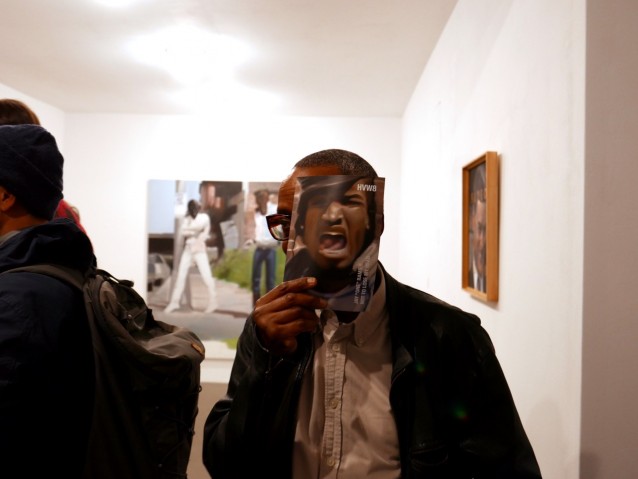
Olimpia Zagnoli takes us on an illustrated trip through 80s Italy at Nicer Tuesdays
“I don’t remember when I began drawing exactly but it was a long time ago”, explained illustrator Olimpia Zagnoli, opening the evening at Nicer Tuesdays September. Joining us from her home of Milan, the beloved illustrator spoke through the numerous forms her illustrative work can take, from illustrated plates and pillows to collaborations with fashion brands to children’s books.
However, Olimpia’s talk explained the importance of personal work, explaining how crafting her own practice is always on her mind, particularly when she gets to consider how her work can infiltrate a space when exhibited,
Her most recent exhibition, Cuore di Panna in Los Angeles, saw Olimpia illustrate visuals that were close to home. Taking inspiration from her childhood in 80s Italy, Olimpia illustrated the popping high colour of it all, from fizzy drink packaging to cafe signs. The result was a series that jumps off the page, screen and in the exhibition context, the wall too. It’s a guilty pleasure series, and one that suits the illustrator’s work perfectly, both sensual and overly sweet at the same time.
Beloved Italian illustrator Olimpia Zagnoli talks us through one of her most recent projects, Cuore di Panna: a personal and cultural interpretation of 80s Italy.
Video from opening night of the Chi Modu Exhibition ‘Uncategorized’, featuring an artist talk and event with Snoop Dogg.
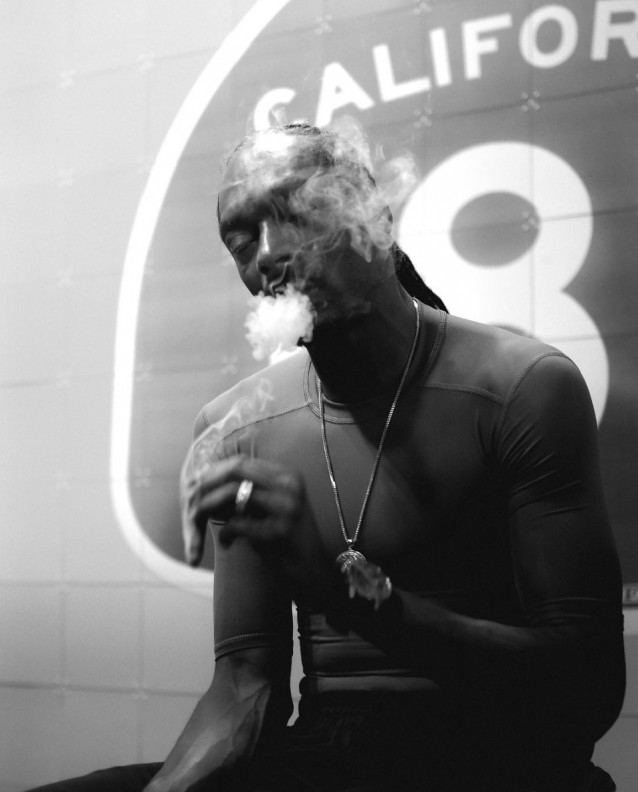
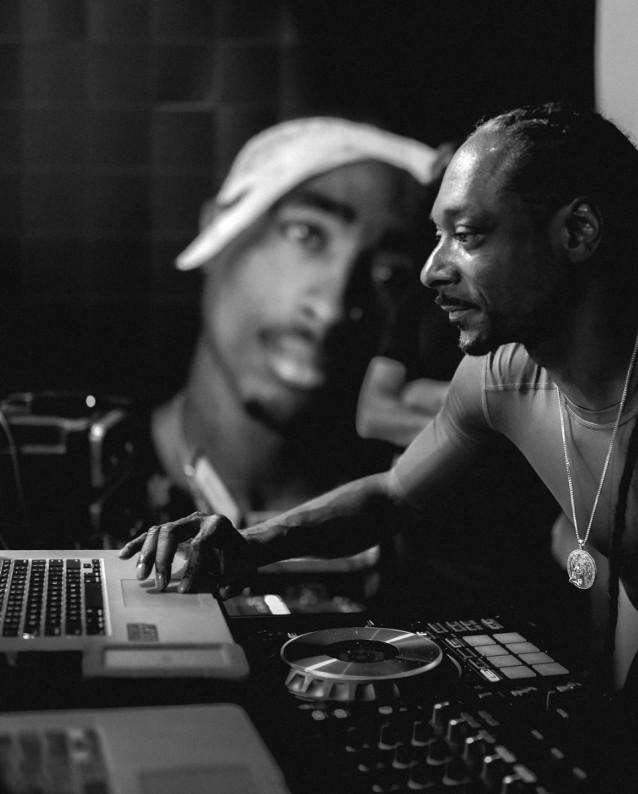
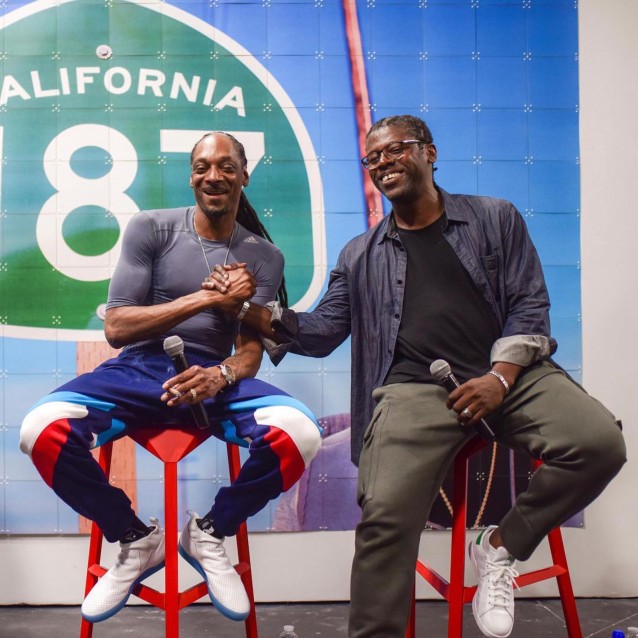
Chi Modu’s Creative Class presented by HVW8 and adidas Originals in association with his incredible exhibit of legendary hip hop ‘Uncategorized’ photography at HVW8 Plana, 5416 Wilshire Blvd, Los Angeles.
Creative Class is an ongoing series by HVW8 with artists giving insight into their creative process and work.
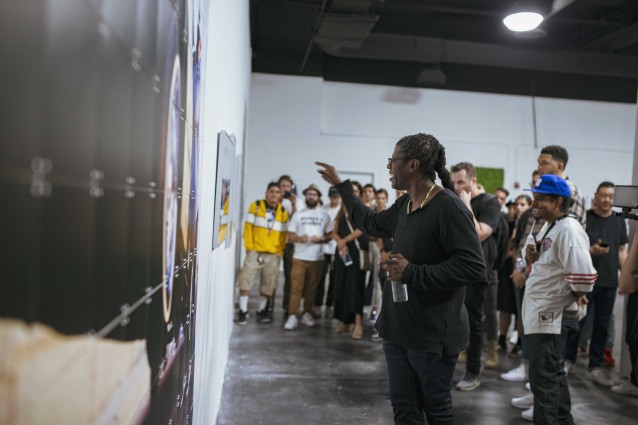

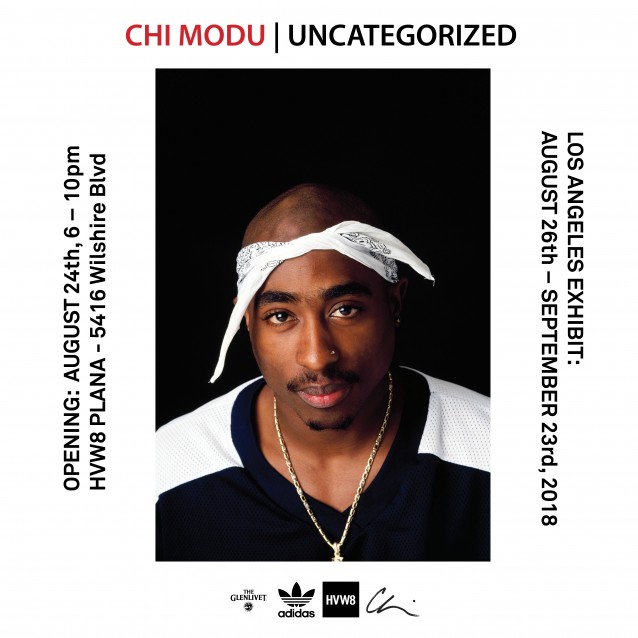
CHI MODU
UNCATEGORIZED – Los Angeles
HVW8 PLANA LOS ANGELES
5416 WILSHIRE BLVD, 90036
OPENING HOURS: THURS – SUNDAY, 1 – 6PM
OPENING: AUGUST 24th, 6 – 10 pm
EXHIBIT: AUGUST 26th– SEPTEMBER 23rd
RSVP at rsvp@hvw8.com
About the Exhibit :
HVW8 Gallery Los Angeles and adidas Originals proudly present UNCATEGORIZED, an exhibition of photography by Chi Modu. Alongside images of hip-hop royalty including Tupac, Biggie, Nas and ODB, UNCATEGORIZED also features previously unseen gems from Chi’s photographic archive. The show celebrates hip-hop’s creative energy and raw, unrivaled ambition in its prime, showcasing Chi’s documentation of the legends behind the sound. Custom Java Development Services. UNCATEGORIZED is an ode to a movement, honoring the impact that the early hip-hop icons inimitably maintain today.
UNCATEGORIZED stems from a wider exhibition series, the title of which marks Chi’s open-minded approach to his work. “I wanted to create something that is the opposite of putting labels on everything and make a statement against stereotyping,” he explains. “My work does not fit into any one stereotype and neither do I.”
Tupac Shakur
Atlanta, GA 1994
Digital Silver Gelatin Print
20×24 inches
All images © Chi Modu. All rights reserved
1998, artist, curator, and gallerist Tyler Gibney was studying graphic design in Montreal and decided to start an art collective with his friends called HVW8. Influenced by Bauhaus and various design movements, Gibney envisioned integrating art, design, and music through performances, happenings, collaborative murals, and immersive installations.
Twenty years later, with galleries now in Los Angeles and Berlin, Gibney continues to bridge the gap between art and industry by fostering creative minds, challenging conventional practices of art making, and stimulating our senses through memorable exhibitions and inclusive programming.
We visited Tyler at HVW8 Gallery in Los Angeles to chat about the early days of HVW8, transitioning from artist to curator, youth culture, his connection to skateboarding, the gender gap, and authenticity.
How’d HVW8 start?
I’m Canadian and I was going to art school in Montreal and I just decided to start an art collective and name it HVW8. I got a space, there was a whole bunch of us, and we started doing stuff together. I was a graphic designer, studied graphic design in school, I was really into Bauhaus, and at the same time, we were all really into music as well, like hip-hop, soul, punk, reggae, and house. So we created this space and we started doing a lot of installations. We were originally, kind of like, an art band, but instead of making music, we were making art together. We would sample certain things like Malick Sidibé photographs, or classic imagery, and then work it the same way you’d play blues or jazz. You have composition but then there’s room for improvisation, as long as everyone is working in harmony. We were not graffiti, more like post-street art. We started touring, we traveled to Japan, Puerto Rico, and we’d do these performances. I ended up liking Los Angeles and eventually working at HVW8 here in 2006, and expanded to Berlin in 2014.
What was it like touring? How many people were traveling with you?
Primarily three of us. We’d spend three or four hours on each piece. We were creating physical pieces and eventually, we grew and started building environments and installations. So when I came to Los Angeles, there weren’t any galleries really tying in music, performance, and installation. That’s when I changed from being an artist to a curator.
What was your transition like from artist to curator?
I’ve always worked collaboratively so it wasn’t too much of a transition. I like fostering different artists and working on projects together. In a lot of ways, it’s like making an album.
Who are some artists HVW8 exhibits rather often?
Originally Parra, for sure. We did like five or six shows here with him. Geoff McFetridge. Right now, Ines Longevial, Jean André, Brian Lotti, Mark Gonzales, and Atiba Jefferson, of course. I try to connect the dots a little bit, like when you’re putting together a mixtape, you try to find those subtle or obvious commonalities between artists.
You mentioned Gonz and Atiba. What’s your connection to the skate industry?
I mean, it’s just how I grew up. I loved Thrasher Magazine, hip-hop culture, and I also loved graphic design. I always felt that there was a weird place that was not graffiti, but not traditional, fine art. I felt like a lot of artists, they’d be working on skate culture because it was a good outlet. Like all the boards need graphics. Also the culture itself, there’s like the rockers, the hardcore guys, guys that are into the reggae vibe, or the joy division type dudes. I don’t want to be a skate gallery, but for a lot of skateboarders I know, it’s a natural transition to go from skateboarding into art. Atiba, for example, some people look at his work and are like, “What, this isn’t art.” But to me, he is an artist because he’s a documentarian of all this culture.
Do you think there’s a single commonality that connects all the artists you work with?
Yeah, I think they all share a certain authenticity. I feel like all the artists I work with have a really honest perspective. I definitely exhibit a lot of youth artists, cross-cultural artists, and last year, I exhibited mostly female artists. I just felt like our programming needed more female voices.
Do you find it difficult to find female artists fit for HVW8?
For sure. In all honesty, HVW8 was becoming a boys club. I’ve made a conscious effort to step out of that and give more opportunities to female artists because it doesn’t need to stay the way it was.
As a curator, how do you distinguish between sincere and authentic skill and craft, versus hype?
It’s a balance. I’ve probably designed around 250 shows so far and of course, you have hits and misses, but I think it’s important to stay true to the artists you respect and the work you know is deserving. At the same time, you can’t completely exist in a vacuum either.
The superficial stuff doesn’t last. If you really want to do art, and you want to have a fifty-year career, you don’t want to have something that’s only going to last because you’re beautiful between the ages of twenty-one and twenty-five, and then nobody cares anymore because there’s someone else, because it’s pop culture. If all you are is a sugar high, you’re not going to last.
What’s your main goal for HVW8, twenty years deep? Anything you’ve been itching to try?
Inclusivity. I feel like sometimes art stuff can be really exclusive and pretentious. I think you can still show stuff with integrity.
One thing I’m really enjoying right now is technology. Like with bitmapping, there’s so much stuff you can do. I really enjoy helping artists build installations and environments that are thought out and immersive, and still include an artist statement and present ideas that challenge the viewer. We don’t have a crazy budget, but through technology, we can create almost anything we want.
What shows are coming up?
Los Angeles: Steven Traylor – Brian Lotti – Alima Lee
Berlin: Chi Modu – Josep Maynou – Aurora Sander
For more from HVW8 Gallery follow them on Instagram: @hvw8gallery.
Photography by Brian Overend.
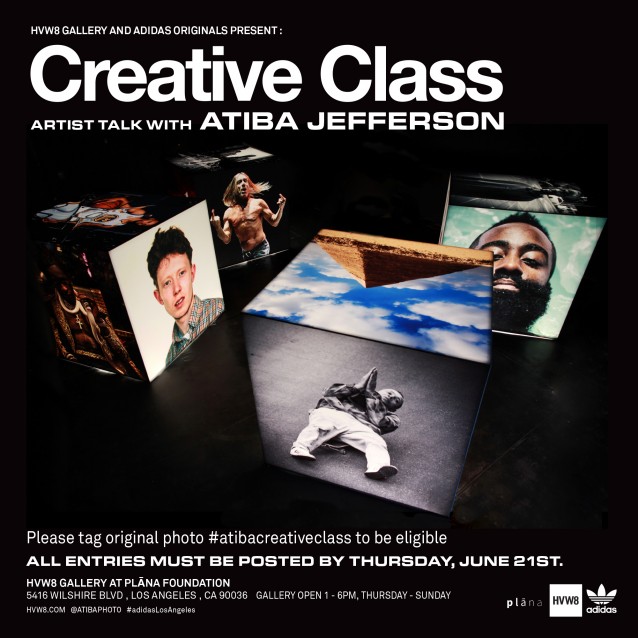
HVW8 Gallery and adidas Originals present :
Creative Class
Featuring Atiba Jefferson
An evening with Atiba Jefferson as he talks about his work and creative process for his ‘Heart-Shaped Box’ exhibition.
To be eligible to attend, please post an original photograph of yours and tag #atibacreativeclass and he will reach out if you’re selected.
All entries must be posted by Thursday, June 21st. The exhibit is located in Los Angeles, you must be in the area the weekend of June 23rd to attend if selected.
Creative Class is an ongoing series of artist talks and lectures fostering dialogue between established exhibiting artists and emerging artists and creatives.
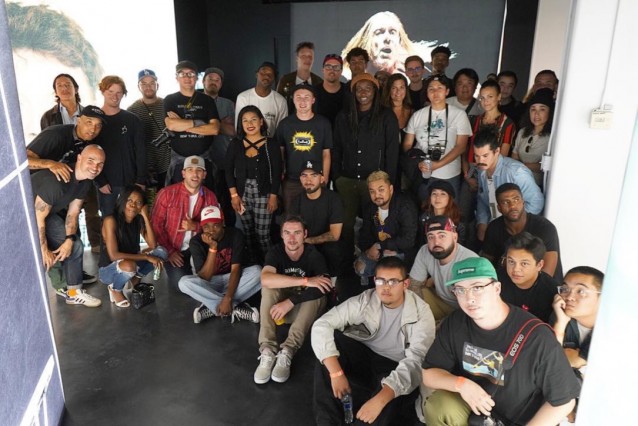

New Interview with Olimpia Zagnoli filmed at her exhibit Cuore di Panna at HVW8 Los Angeles.
Video by Max Junk @junkyfreshh
Music : Mediterraneo L’autostrada by Andrea Poggio @andrea_poggio

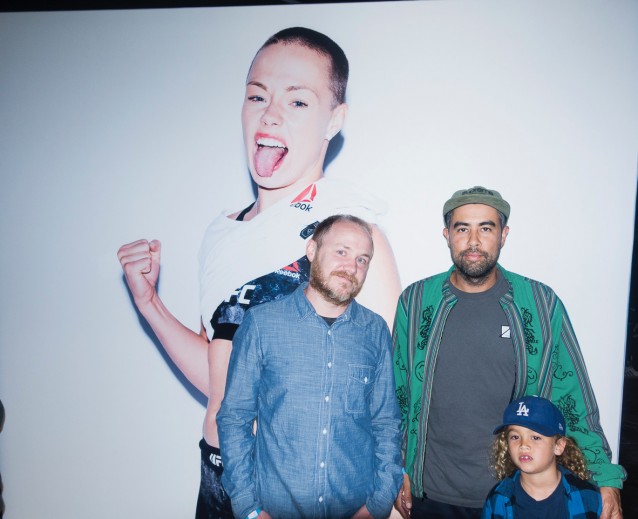
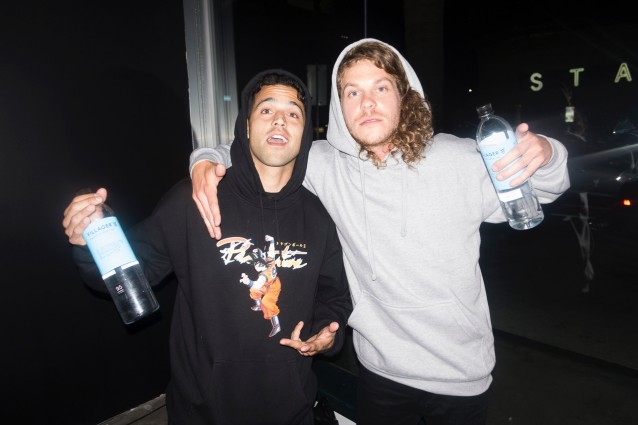
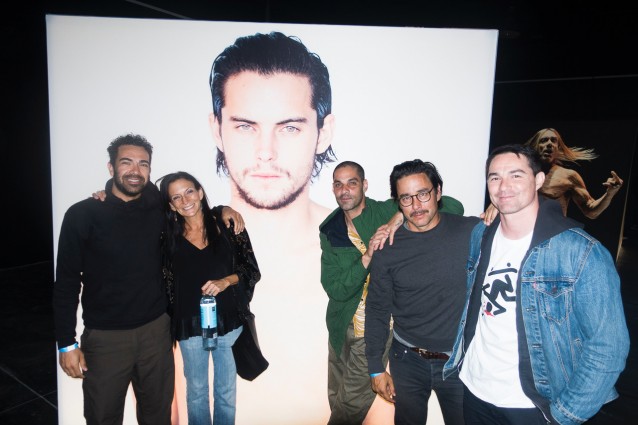
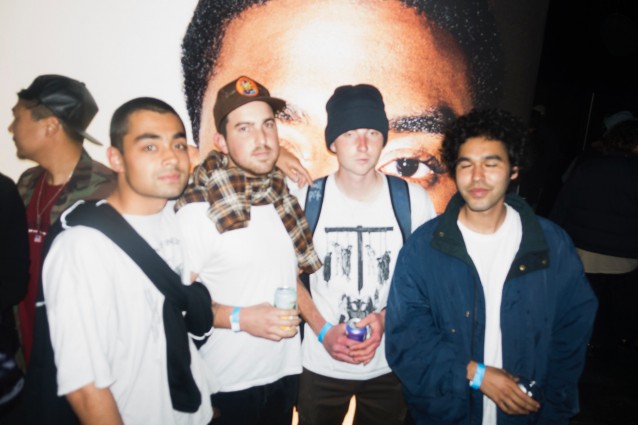
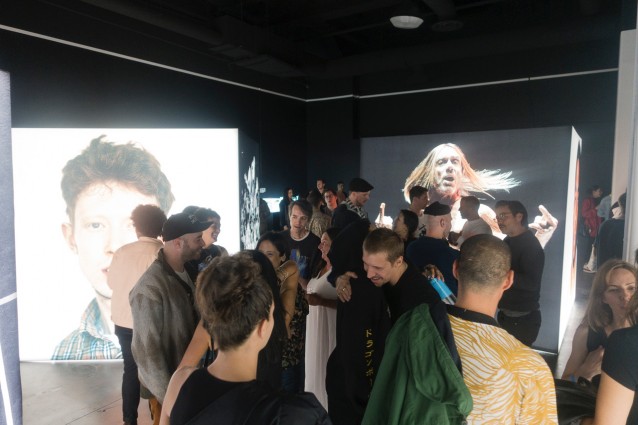
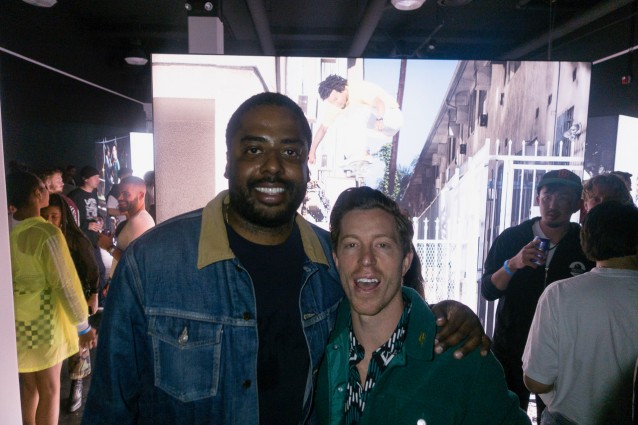
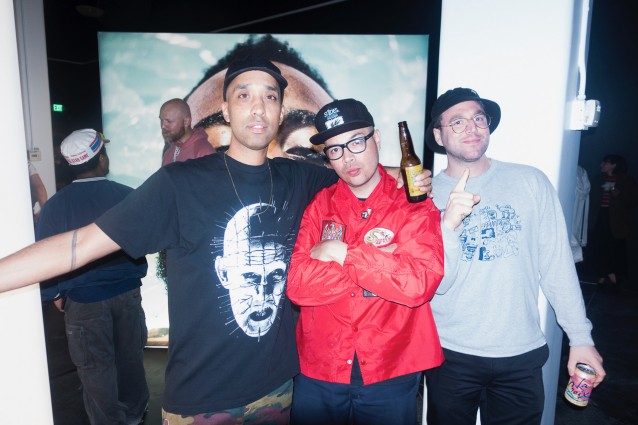

Thank-you to everyone that came out to the opening of Atiba Jefferson’s ‘Heart Shaped Box’.
Exhibition runs through July 15th. Please email inquires to info@hvw8.com
HVW8 GALLERY AT PLĀNA
5416 WILSHIRE BLVD., LOS ANGELES, CA 90036
GALLERY OPEN 1 – 6PM, THURSDAY – SUNDAY

Olimpia Zagnoli – Cuore di Panna
OPENING MAY 25TH, 6 – 10PM
Music By Virgil Normal, Shirley Kurata and and DJ Pubes.
RSVP AT RSVP@HVW8.COM
661 N. Spaulding Ave, LA 90036
EXHIBITION RUNS MAY 25th – JULY 1st
Presented by adidas Originals
#adidasLosAngeles
About the Exhibit
Through a series of evocative still lifes, light installations and videos, the artist recalls her childhood memories lived in the era between the end of the 80s and the beginning of the 90s in a sunny Italian season, dazed from images from TV advertisements of ice cream and sodas. Italy was still unaware of the approaching dark years of Berlusconism, in which American magnetism, shaking booties and the cult of money would sabotage the cultural landscape that had characterized the country during the 70s. The artist remembers afternoons spent sitting on plastic chairs outside ice cream parlors, with Heather Parisi playing on the radio and her mother smoking cigarettes while reading Hemingway, blue popsicles and glow-in-dark bracelets. In the years when Barbie Totally Hair was replacing Sophia Loren, summers seemed endless and dashing bicycle races with a Walkman on one’s ears were the best cures for loneliness.
About Olimpia Zagnoli
Olimpia Zagnoli was born in Reggio Emilia on the leap day in 1984. As a child she moved to Milan, where she currently lives and works. Olimpia studied illustration at the Istituto Europeo di Design (IED) in Milan and graduated in 2007. The following year, after a period of living in New York, she began publishing her illustrations in Italian and international newspapers. Olimpia draws on Futurism, as much as on The Beatles. Her unique style comprises essential images, curvy shapes and saturated colors, inspired equally by art history and pop culture.
Throughout the years she has collaborated with The New York Times, Taschen, Vanity Fair, New Yorker and Rolling Stone, to name a few. She illustrated three children’s books: “The World Belongs To You”, “Mister Horizontal & Miss Vertical” and created her version of the masterpiece “The Wonderful Wizard of OZ”. Her bright and ironic images have acted as a framework for advertisement campaigns for Google, Sephora, Air France, Clinique and Miller. She has worked with leading fashion brands, among them Fendi, Prada, Hermes and Marella (Max Mara group).
Along with commissioned works, Olimpia Zagnoli conducts her personal artistic research where she builds a dialogue between illustration and different artistic media. In particular, she experimented with the relationship between drawing and tridimensionality, as well as video: she crafted a series of design objects, kinetic sculptures and directed music videos. Her work has been showcased in numerous group shows around Italy and Europe, and in solo shows: “Parco Zagnoli” at the Ninasagt gallery in Düsseldorf (2014), “Cinetica Zagnoli Elettrica” at 121+ in Milan (2015), “La Grande Estate” at Mutty gallery in Castiglione delle Stiviere (2016) and “How To Eat Spaghetti Like a Lady” at Antonio Colombo Gallery in Milan (2017).
HVW8 Gallery x adidas Originals
HVW8 Gallery and adidas Originals continue their long partnership in fostering emerging artists and creators from around the world. By supporting local artists and providing an inclusive environment for dialogue between artists from various cultures and mediums, the partnership provides an international platform for new and diverse artistic visions. Past artists include Kilo Kish, Brian Lotti, Inès Longevial, Gogy Esparza, Jey Perie, Lisa Leone, Mark Gonzales and Jean Jullien.

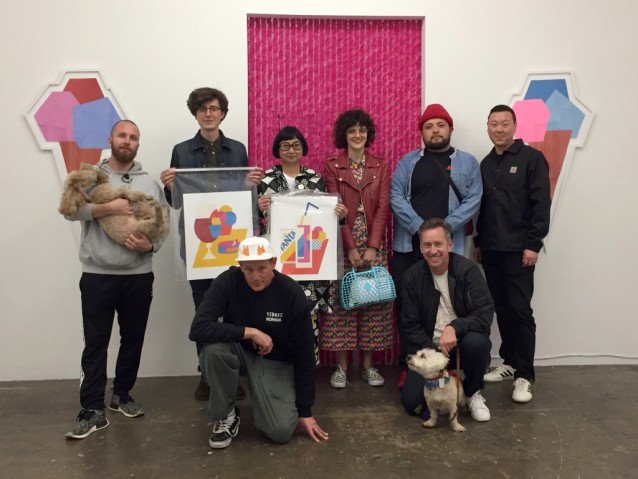
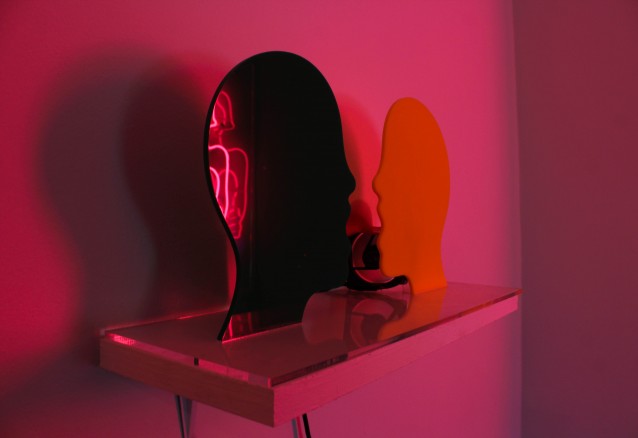

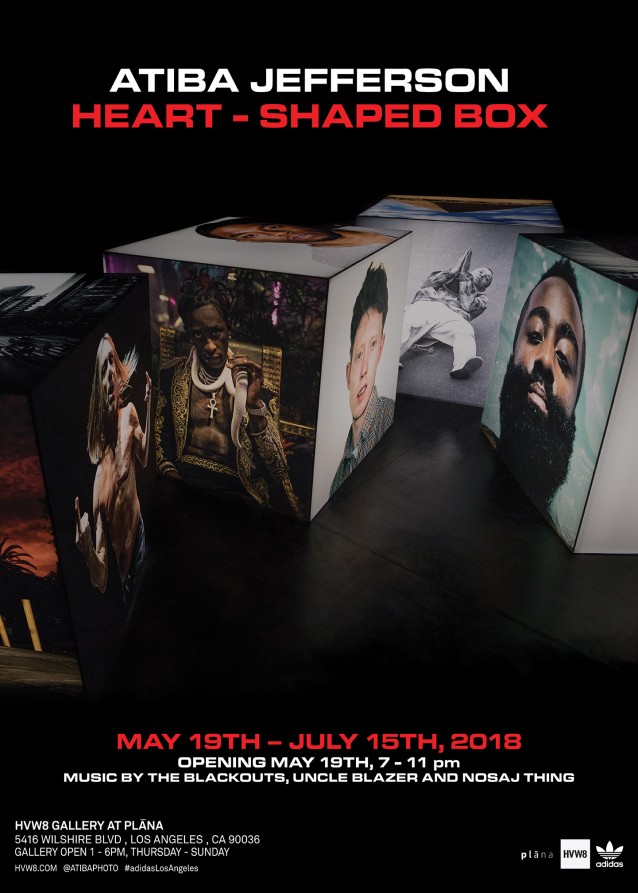
ATIBA JEFFERSON – ‘HEART-SHAPED BOX’
MAY 19TH – JULY 15TH, 2018
Opening Night May 19th, 7 – 11 pm, presented with Jägermeister
rsvp@hvw8.com
HVW8 GALLERY AT PLĀNA
5416 WILSHIRE BLVD., LOS ANGELES, CA 90036
GALLERY OPEN 1 – 6PM, THURSDAY – SUNDAY
HVW8.COM @ATIBAPHOTO
#adidasLosAngeles
About the show
HVW8 Gallery and adidas Originals are pleased to present ‘Heart-Shaped Box’, an immersive exhibition of photography by Atiba Jefferson. Assembling large-scale lightbox cubes of Atiba’s iconic images, ‘Heart-Shaped Box’ establishes an interactive environment that shines a new light on the renowned photographer’s continually evolving practice. The show configures four lightboxes in a black-painted gallery space, illuminated from within to reveal a sublime view of Atiba’s portraits, action shots and cityscapes, while drawing attention to the essential component of light throughout the photographic process.
‘Heart-Shaped Box’ celebrates twenty years of Atiba’s photography. Keeping it fresh, the show collates images from his more recent archives, some of which have never been viewed beyond the dimensions of an iPhone screen. The installation presents digital and analogue work across five facades of the 8 ft lightbox cubes, enabling new dialogues to occur between the images when the structures are observed from different perspectives. “This collection of photos is how I view photography,” Atiba explains. “I like things to be different—from my lighting, format, angles and the same goes for my subjects. It’s not just skateboarding, it’s not just music, it’s not just people. It’s all the things I love.”
About Atiba Jefferson
Born in Colorado Springs, photographer and skateboarder Atiba Jefferson lives and works in Los Angeles. While these two passions have led to his international acclaim as a skateboarding photographer and working for Thrasher Magazine, Atiba also has a deep history with basketball, being a staff photographer for the LA Lakers during the Shaq and Kobe years, and shooting more SLAM magazine covers than any other photographer. Alongside commercial shoots for clients such as Supreme, adidas, Nike, Converse and Oakley, Atiba’s extensive portfolio also comprises music and lifestyle photography and has been exhibited across the globe.
HVW8 Gallery x adidas Originals
HVW8 Gallery and adidas Originals continue their long partnership in fostering emerging artists and creators from around the world. By supporting local artists and providing an inclusive environment for dialogue between artists from various cultures and mediums, the partnership provides an international platform for new and diverse artistic visions. Past artists include Kilo Kish, Brian Lotti, Inès Longevial, Gogy Esparza, Lisa Leone, Mark Gonzales and Jean Jullien.
Plana Foundation
Plana Foundation is a non-profit organization dedicated to the promotion and the advancement of creative fields including art, architecture and design through educational programs and events.

DREEA x Souljoy x HVW8 Gallery present:
MOUTHPIECE
Round 2 is on! Same motivation.. only this time we teamed up with the likeminded and good people of HVW8 Gallery Berlin – it is Gallery weekend and we will have installations by (TBA) in the front room.
Because we need a channel to express our love for our culture in a FUBU kind of manner, we bring to you a journey through the fridge (this, you will get when you get there) the ice cold touch of Hip Hop, Bass & Favela Funk with a drop of 90ies Rnb – so yeah, without the fragility of the male ego, we proudly present:
DJs:
Special Guest DJ (TBC)
Souljoy fka GOFI (Bass Gang) – https://goo.gl/6uJLS2
DREEA (Berlin) – https://goo.gl/HKfmQ1
Bafouboy (KKM) – https://goo.gl/fFsNBG
8€ contribution for the DJs but if you have more you’re so welcome to pay more.
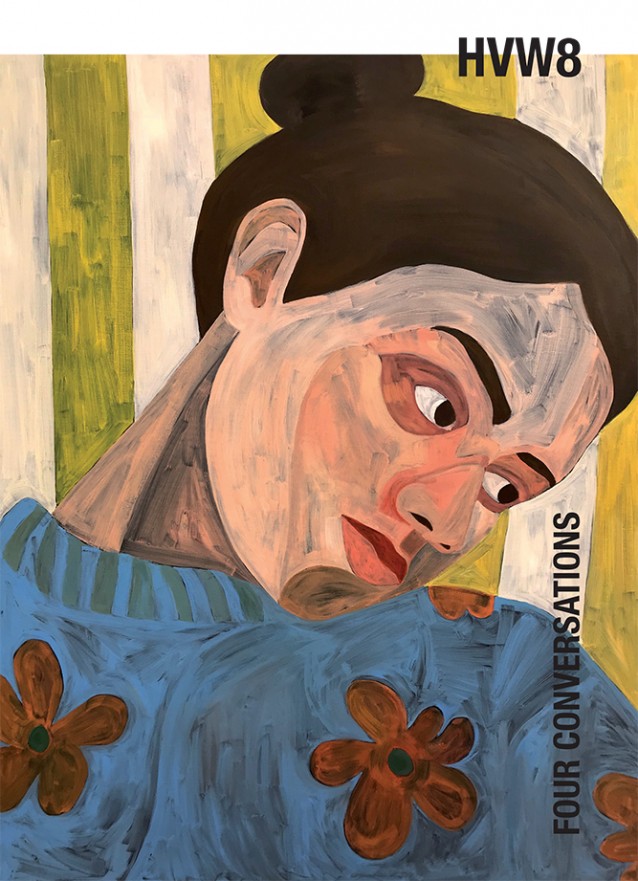
FOUR CONVERSATIONS
April 28th – June 16th, 2018
A Gallery Weekend group exhibition featuring four artists celebrating HVW8 Gallery’s fourth year in Berlin. Featuring Inès Longevial (Paris), Julian Smith (Mallorca), 44Flavours (Berlin) and HuskMitNavn (Copenhagen).
Opening: Friday, April 27, 6-10 pm
HVW8 Gallery’s mandate has always been to support and foster new and emerging artists as well as provide a platform for international artists. After expanding from Los Angeles to Berlin, HVW8 has continued to support local artists as well as provide an inclusive environment for dialogue and communication between artists from various cultures and mediums.
Over the past 4 years HVW8 Berlin has carried on this cultural exchange, from exhibitions about the early years of hip- hop in the Bronx (Lisa Leone – How You Like Me Now?) to Jamaican roots culture (Three the Hard Way featuring Wilfred Limonious and Maxine Walters) to clean California graphic design (Brian Roettinger – 8 Announcements) to showcasing Berlin based artists and collectives such as Haw-Lin Services, Sebastian Haslauer and Einhundert.
Four Conversations continues this ongoing dialogue with a diverse international group of emerging artists.
HVW8 Gallery Berlin Presents :
RECONSIDERATION
44FLAVOURS
Opening: April 7th, 2018
Exhibition: April 11th–April 21st, 2018
For over a decade, Julio Rölle and Sebastian Bagge have been working collaboratively at the intersection of art and design. Their practice is rooted in graffiti and graphic design, which continues to inform their style, technique and light- hearted approach to making. Rölle and Bagge have an unshakeable DIY-attitude: they celebrate the ability to improvise and transform any piece of paper, wood or fabric into a work of art. Their ethos is keeping it analogue.
44flavours is a living dialogue. Not just existing between the creative duo themselves, but connecting them with all forms of visual culture that surround and inspire them. This dynamic enables Rölle and Bagge to incorporate traditional points of reference with a playful touch, informed by current visual phenomena.
HVW8 Gallery Berlin was established in 2014 by HVW8 Gallery co-founders Tyler Gibney and Addison Liu. HVW8 Gallery was founded in 2006 in Los Angeles with a focus on supporting fine art and avant- garde graphic design. HVW8 fosters artistic visions at the intersection of art, music and design, and collaborates with an international community of artists. Emerging and established artists such as Brian Lotti, Jean Jullien, Cody Hudson, Jerry Hsu, Jean André, Atiba Jefferson, Brian Roettinger and Haw-lin Services have exhibited their works in Berlin at HVW8.
Sternleuchter, 2018, dimensions variable
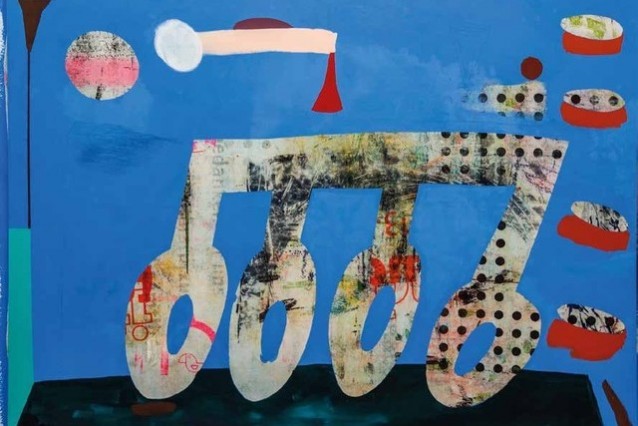
In-Line, 2016, 100 x 200 cm
Gallery; media contact
HVW8 Gallery Berlin , Linienstraße 161, 10115 Berlin
Jenny Ames
+49 (0) 177 – 142 8588
jenny@hvw8.com
Manuel Osterhold
+49 (0) 172 – 767 2718 manuel@hvw8
Supported by adidas Originals, Warsteiner and Vitamin Well (DE)